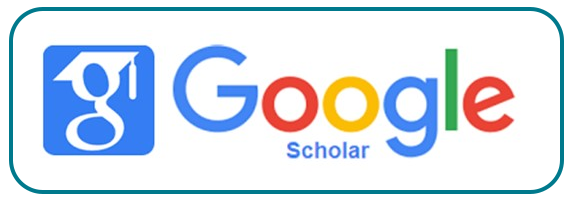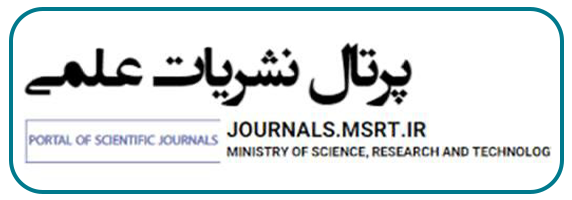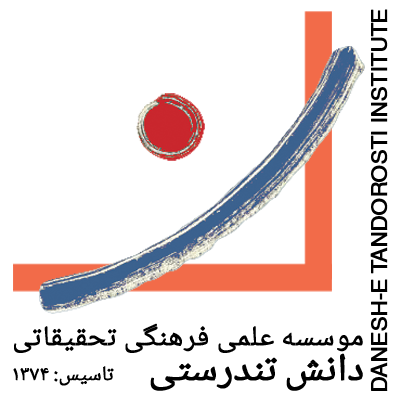Influence of Stress Level on Dysmenorrhea Severity among Female University Students
Downloads
Objective: Dysmenorrhea, or painful menstruation, is a common issue among young women, particularly university students, and has a significant impact on their daily functioning. This study aimed to investigate the relationship between stress levels and the severity of dysmenorrhea among female university students.
Methods and Materials: A correlational study was conducted involving 367 female students from the University of Karbala, aged 18 to 25 years, selected through convenience sampling. Stress levels were assessed using the Perceived Stress Scale (PSS-10), while the severity of dysmenorrhea was measured using the WaLIDD scale. Demographic data were also collected. The data were analyzed using descriptive statistics, Pearson’s correlation, and simple linear regression.
Findings: The majority of participants (89.6%) reported moderate stress levels (mean score: 21.09 ± 4.023), while the severity of dysmenorrhea was 8.34 ± 1.381 (mean score: 8.34 ± 1.381). Regression analysis revealed a significant positive relationship between stress levels and dysmenorrhea severity (β = 0.224; p = 0.009). For each unit increase in stress levels, a 0.0753 unit increase in dysmenorrhea severity was predicted.
Conclusion: The study emphasizes that higher stress levels worsen dysmenorrhea, highlighting the importance of psychological factors in menstrual health. Stress management interventions, such as counseling and relaxation techniques, can help reduce the impact of dysmenorrhea. Universities should implement programs to support students' well-being, including education on menstrual health, self-care, physical activity, and access to healthcare services, including gynecological and psychological support.
Downloads
Al-Qahtani, M. F., & Alsubaie, A. S. R. (2020). Investigating stress and sources of stress among female health profession students in a Saudi University. Journal of multidisciplinary healthcare, 477-484. https://doi.org/10.2147/JMDH.S255781
Ali, A., Ali, A., Alotaibi, N. S., Alsufyani, M. S., Alotaibi, A. J., Almutairi, M. M., & Eldalo, A. S. (2022). Prevalence, impact, and management perception of dysmenorrhea among university students: A cross-sectional study. Brazilian Journal of Pharmaceutical Sciences, 58, e20458 https://doi.org/10.1590/s2175-97902022e20458.
Ali, B. M., & Al-Juboori, A. K. (2021). The Relationship between Psychological Wellbeing and Self-Care among Elderly Residents in Iraq. Indian Journal of Forensic Medicine & Toxicology, 15(4). https://doi.org/10.37506/ijfmt.v15i4.16813
Appleyard, C. B., Flores, I., & Torres-Reverón, A. (2020). The link between stress and endometriosis: from animal models to the clinical scenario. Reproductive Sciences, 27(9), 1675-1686. https://doi.org/10.1007/s43032-020-00205-7
Armour, M., Smith, C. A., Steel, K. A., & Macmillan, F. (2019). The effectiveness of self-care and lifestyle interventions in primary dysmenorrhea: a systematic review and meta-analysis. BMC complementary and alternative medicine, 19(1), 22. https://doi.org/10.1186/s12906-019-2433-8
Azagew, A. W., Kassie, D. G., & Walle, T. A. (2020). Prevalence of primary dysmenorrhea, its intensity, impact, and associated factors among female students at Gondar Town Preparatory School, Northwest Ethiopia. BMC women's health, 20(1), 5. https://doi.org/10.1186/s12905-019-0873-4
Azeyadi, S., & Ali, Z. (2024). Exploring the Empathy-Burnout Connection among Nurses: Working at Teaching Hospitals. 5th International Conference on Biomedical and Health Sciences, https://conferences.cihanuniversity.edu.iq/index.p.
Bajalan, Z., Moafi, F., MoradiBaglooei, M., & Alimoradi, Z. (2019). Mental health and primary dysmenorrhea: a systematic review. Journal of Psychosomatic Obstetrics & Gynecology, 40(3), 185-194. https://doi.org/10.1080/0167482X.2018.1470619
Chyad, A. M., & Faris, S. H. Effect of Educational Program on Nursing Staff's Knowledge and Attitude Toward Prevention of Hepatitis B Virus Infection in the Cardiac Diseases and Surgery CENTER. International journal of health sciences, 6(S4), 12112-12120 https://doi.org/10.53730/ijhs.v6nS4.11815.
Deep, W. Y., & Oleiwi, S. S. (2024). OBSTETRICS-RELATED FACTORS ASSOCIATED WITH TYPES OF CESAREAN SECTIONS AMONG MOTHERS. Obstetrics & Gynaecology Forum, https://obstetricsandgynaecologyforum.com/index.php/ogf/article/view/595
Derseh, B., Afessa, N., Temesgen, M., Semayat, Y., Kassaye, M., Sieru, S., & Ketsela, K. (2017). Prevalence of dysmenorrhea and its effects on school performance: a cross-sectional study. Journal of Women’s Health Care, 6(2), 361. https://10.4172/2167-0420.1000361
Elsayed Elaraby, M., Youssef El-Sheikh, O., Fahmy Hussein, M., & El-Sayed El-Ghadban, F. (2025). Effect of Instructional Guidelines regarding Early Ambulation on Knowledge, Attitude, and Anxiety among Mothers of Children with Congenital Heart Diseases post Cardiac Catheterization. Egyptian Journal of Health Care, 16(2), 1-17 https://doi.org/10.21608/ejhc.2025.417805.
González-Echevarría, A. M., Rosario, E., Acevedo, S., & Flores, I. (2019). Impact of coping strategies on quality of life of adolescents and young women with endometriosis. Journal of Psychosomatic Obstetrics & Gynecology, 40(2), 138-145. https://doi.org/10.1080/0167482X.2018.1450384
Jaleel, A. K., & Nawam, S. D. (2022). Basic Psychological Needs and Its Relation to Self-efficacy among Nursing Collegians. International Journal of Early Childhood Special Education, 14(5). https://10.9756/INTJECSE/V14I5.1044
Klusmann, H., Luecking, N., Engel, S., Blecker, M. K., Knaevelsrud, C., & Schumacher, S. (2023). Menstrual cycle-related changes in HPA axis reactivity to acute psychosocial and physiological stressors–A systematic review and meta-analysis of longitudinal studies. Neuroscience & Biobehavioral Reviews, 150, 105212 https://doi.org/10.1016/j.neubiorev.2023.105212.
Mesele, T. T., Ayalew, H. G., Syoum, A. T., & Antehneh, T. A. (2022). Impact of dysmenorrhea on academic performance among Haramaya University undergraduate regular students, Eastern Ethiopia. Frontiers in Reproductive Health, 4, 939035 https://doi.org/10.3389/frph.2022.939035.
Orhan, C., Çelenay, Ş. T., Demirtürk, F., Özgül, S., Üzelpasacı, E., & Akbayrak, T. (2018). Effects of menstrual pain on the academic performance and participation in sports and social activities in Turkish university students with primary dysmenorrhea: A case control study. Journal of Obstetrics and Gynaecology Research, 44(11), 2101-2109 https://doi.org/10.1111/jog.13768.
Shaw, M. P., Peart, D. J., & Fairhead, O. J. W. (2017). Perceived stress in university students studying in a further education college. Research in Post-comPulsoRy education, 22(3), 442-452. https://doi.org/10.1080/13596748.2017.1362534
Sima, R.-M., Sulea, M., Radosa, J. C., Findeklee, S., Hamoud, B. H., Popescu, M., Gorecki, G. P., Bobircă, A., Bobirca, F., & Cirstoveanu, C. (2022). The prevalence, management, and impact of dysmenorrhea on medical students’ lives—A multicenter study. Healthcare, https://doi.org/10.3390/healthcare10010157
Siqueira Reis, R., Ferreira Hino, A. A., & Romélio Rodríguez Añez, C. (2010). Perceived stress scale: Reliability and validity study in Brazil. Journal of Health Psychology, 15(1), 107-114 https://doi.org/10.1177/1359105309346343.
Situmorang, M., & Anastasya, M. (2024). Analysis of the Relationship between Stress and Dysmenorrhea in Female Students. International Journal on ObGyn and Health Sciences, 2(3), 125-133. https://doi.org/10.35335/obgyn.v2i3.182
Taş, F., & Zincir, H. (2021). Effect of dysmenorrhea severity on social and school lives of high school students. Cukurova Medical Journal, 46(3), 1086-1093. https://doi.org/10.17826/cumj.910344
Teherán, A. A., Piñeros, L. G., Pulido, F., & Mejía Guatibonza, M. C. (2018). WaLIDD score, a new tool to diagnose dysmenorrhea and predict medical leave in university students. International journal of women's health, 35-45 https://doi.org/10.2147/IJWH.S143510.
Vlachou, E., Owens, D. A., Lavdaniti, M., Kalemikerakis, J., Evagelou, E., Margari, N., Fasoi, G., Evangelidou, E., Govina, O., & Tsartsalis, A. N. (2019). Prevalence, well-being, and symptoms of dysmenorrhea among university nursing students in Greece. Diseases, 7(1), 5 https://doi.org/10.3390/diseases7010005.
Wang, L., Yan, Y., Qiu, H., Xu, D., Zhu, J., Liu, J., & Li, H. (2022). Prevalence and risk factors of primary dysmenorrhea in students: a meta-analysis. Value in Health, 25(10), 1678-1684. https://doi.org/10.1016/j.jval.2022.03.023
Yasir, A. A., Elywy, G. J., & Radhi, M. M. (2018). Assessment the development of social responsibility among sample of (Kut Technical Institute, Iraq) students and its relation to social media network sites. Research Journal of Pharmacy and Technology, 11(10), 4426-4430. https://doi.org/10.5958/0974-360X.2018.00810.7
Yurdakos, K., Gulhan, Y., ÜNALAN, D., & ÖZTÜRK, A. (2013). Knowledge, attitudes, and behaviour of women working in government hospitals regarding breast self-examination. Asian Pacific Journal of Cancer Prevention, 14(8). https://doi.org/10.7314/APJCP.2013.14.8.4829
Copyright (c) 2025 International Journal of Body, Mind and Culture

This work is licensed under a Creative Commons Attribution-NonCommercial 4.0 International License.















